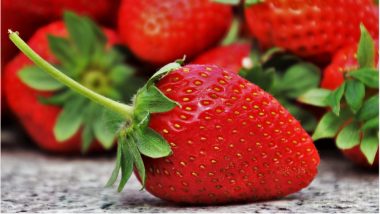Separate sexes in humans and animals like man and woman and hen and rooster are common to nature, but they’re an oddity for most plants. Sex chromosomes in plants have arisen only recently and most plants are generally hermaphrodites, which contain both male and female sex organs. Only about 6% have split into different sexes, including garden asparagus, papaya, hops and marijuana. As discovered in the 1840s, strawberries come in three flavours - male, female and combo. Now, scientists have figured out how strawberries, which have the youngest known sex chromosomes of any plant or animal, made their recent transition to male and female. The unusual ‘jumping’ genes responsible could mean sex differences can change faster in plants, as reported in Science Mag.
To find out how those flavours evolved, ecologist Tia-Lynn Ashman at the University of Pittsburgh, Pennsylvania has spent nearly 20 years showing that different locations on the strawberry genome can control sex. While humans have two copies of each of our 23 chromosomes, strawberries have eight copies of seven chromosomes, for a grand total of 56. Ashman and her team found the first evidence of male and female-determining regions in an East Coast variety of a common North American wild strawberry some 10 years ago. But when they found the same sex region in a closely related Oregon beach wild strawberry, it was in an entirely different place on an entirely different chromosome and the same was true of a third variety.
Ashman stated that obvious answer was that the strawberries had developed different sexes independently. Another reason could also be that a region of DNA had arisen once and was moving around the genome. When the first strawberry genome project came to fruition in 2011, Ashman and biologist Aaron Liston teamed up to take a closer look. In a brute force approach, they sequenced the North American and the Oregon beach wild strawberry plants, evenly divided between males and females, to see whether any DNA was unique to females. The researchers reported that all females shared a short sequence that had jumped at least twice as the plants reproduced over many generations.
With each jump, the number of female-specific genes on the sequence increased. The travelling increased the difference between the sex chromosomes, the researchers speculate. In strawberries, the short jumping sequence contained two genes with potential roles in pollen and fruit development. Biologist Deborah Charlesworth from The University of Edinburgh, a pioneer in the evolution of sex chromosomes, wrote in an email: “This study provides that first observations suggesting that a sex determining region in a plant can ‘jump’ from an initial location to a new one. The study does a heroic job of trying to sort this out.” The researchers caution that the functions of the two genes and details of how they ‘jump’ still need to be confirmed.
(The above story first appeared on LatestLY on Sep 08, 2018 03:40 PM IST. For more news and updates on politics, world, sports, entertainment and lifestyle, log on to our website latestly.com).













 Quickly
Quickly


